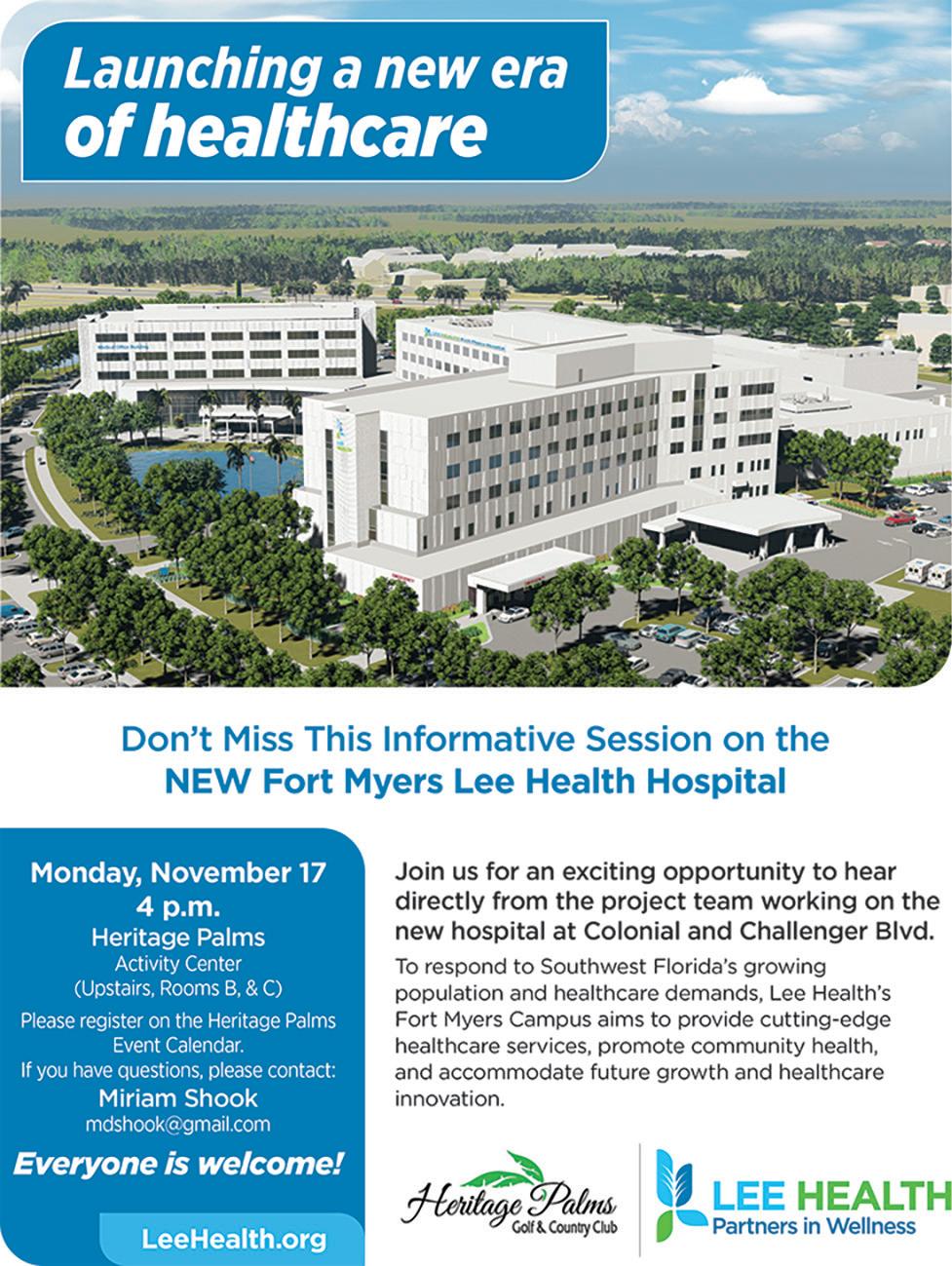Between Palms THE









JANE BREISCH, EDITOR CVGOLFERS@GMAIL.COM
November is a month for remembering our Veterans and troops. Thank you for serving with honor and dedication. There are still many ways for us to show our gratitude to our Veteran men and women. Consider donating to a Veterans’ organization (like the HPVA); write to someone in the military by sending a simple postcard or e-card; fly a flag; or just ask a Veteran how they’re doing.
All are simple ways to demonstrate your thanks for their service.
John F Kennedy said it best: “As we express our gratitude, we must never forget that the highest appreciation is not to utter words, but to live by them.” Let’s keep that in mind.

On May 8, 1945, World War II in Europe came to an end. As the news of Germany’s surrender reached the rest of the world, joyous crowds gathered to celebrate in the streets, clutching newspapers that declared Victory in Europe (V-E Day). Later that year, US President Harry S. Truman announced Japan’s surrender and the end of World War II. The news spread quickly and celebrations erupted across the United States. On September 2, 1945, formal surrender documents were signed aboard the USS Missouri, designating the day as the official Victory over Japan Day (V-J
Day). In recognition of all of the Veterans who served in WWII, please see my article Nine World War II Facts Every History Buff Should Know on page 32.
Elections are held this month, so it’s only fitting I share a little election trivia with you. Please see my article The Most Bizarre Elections in U.S. History on page 42.
By now you may have reviewed the 2025 Member Survey which was posted on our

website in September. There are 255 pages of member comments listed at the end of the survey results. Some of these comments reflect misunderstandings or misconceptions of HP in several areas. I’ve attempted to address those comments which are largely related to Communications. Please see my article Member Survey Misconceptions Addressed on page 20.
I believe most of you read this issue in the magazine format on-line. If you choose to download it to your computer as a PDF (Adobe) for viewing, it’s easy to do. When BTP is first opened, scroll down to the bottom of page 1. When there, simply click the downward arrow icon (see sample #3 to the right) to download the magazine as a PDF on your laptop, iPad, or cell phone. For viewing purposes, on the right-hand side
Cleaning out your closet? The Gateway Women’s Club is hosting a Shoe Drive now through November 7, and we invite you to join in supporting this great cause. We are collecting new or gently used shoes of all sizes. They can be men’s, women’s, kids’, tennis shoes, sandals, crocs, boots, etc. You can drop them off in the dedicated box in the Activity Center Lobby. Every pair donated helps make a difference for someone in need.
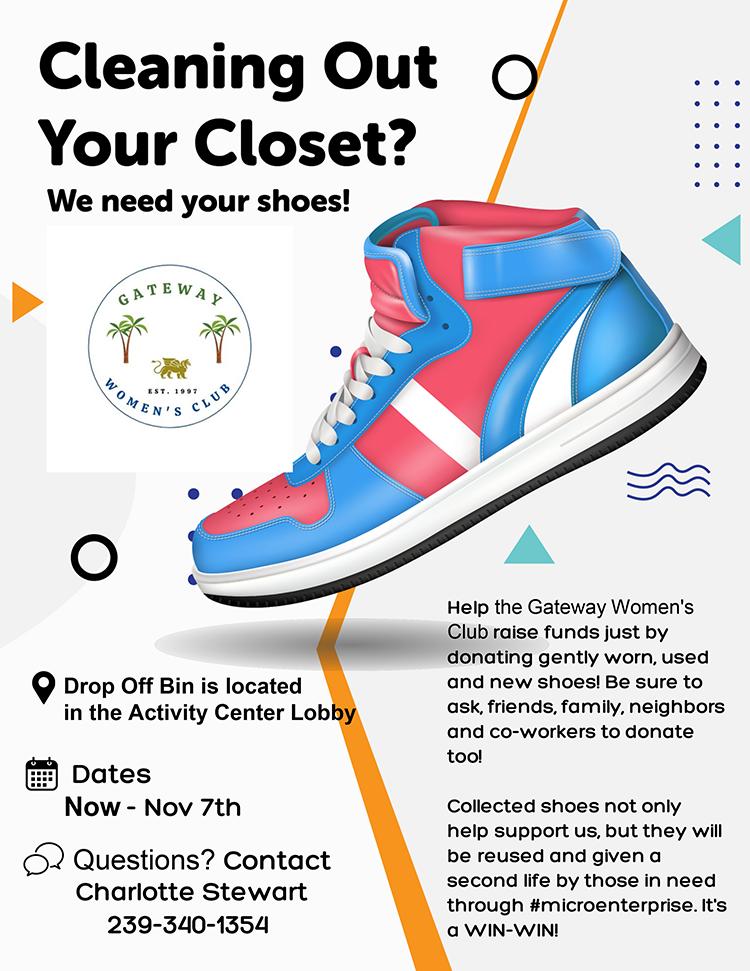
of the PDF page, click the display icon and choose “Two-page view” and “Show cover page.” It will appear just like the on-line magazine version! If you download the issue, you can print any page you like, and also store any current or prior issue on your laptop. It’s easy-peasy!
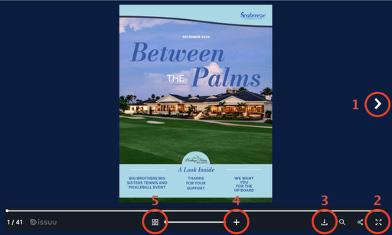
Should you have an article to submit for the December issue, my deadline is November 4. Post Cards are always welcome! Please email to cvgolfers@gmail.com.

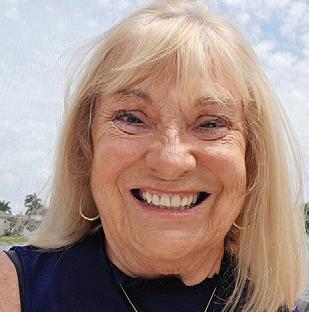
MARY LOU REID, COMMUNICATIONS COMMITTEE MEMBER MLREID107@GMAIL.COM
As a way to stay active, social, and have fun indoors during long winter months in Savage, Minnesota, Heritage Palms’ new golf teaching pro, Kristine Bonham, played basketball. In middle school, her teammates invited Kristine to play golf in the summers on the JV/Spring golf team. Her parents, who played golf, introduced her to the driving range. Kristine reminisces, “Basketball kept me competitive in the winters, but golf quickly became the sport I couldn’t put down. Our team winning the State
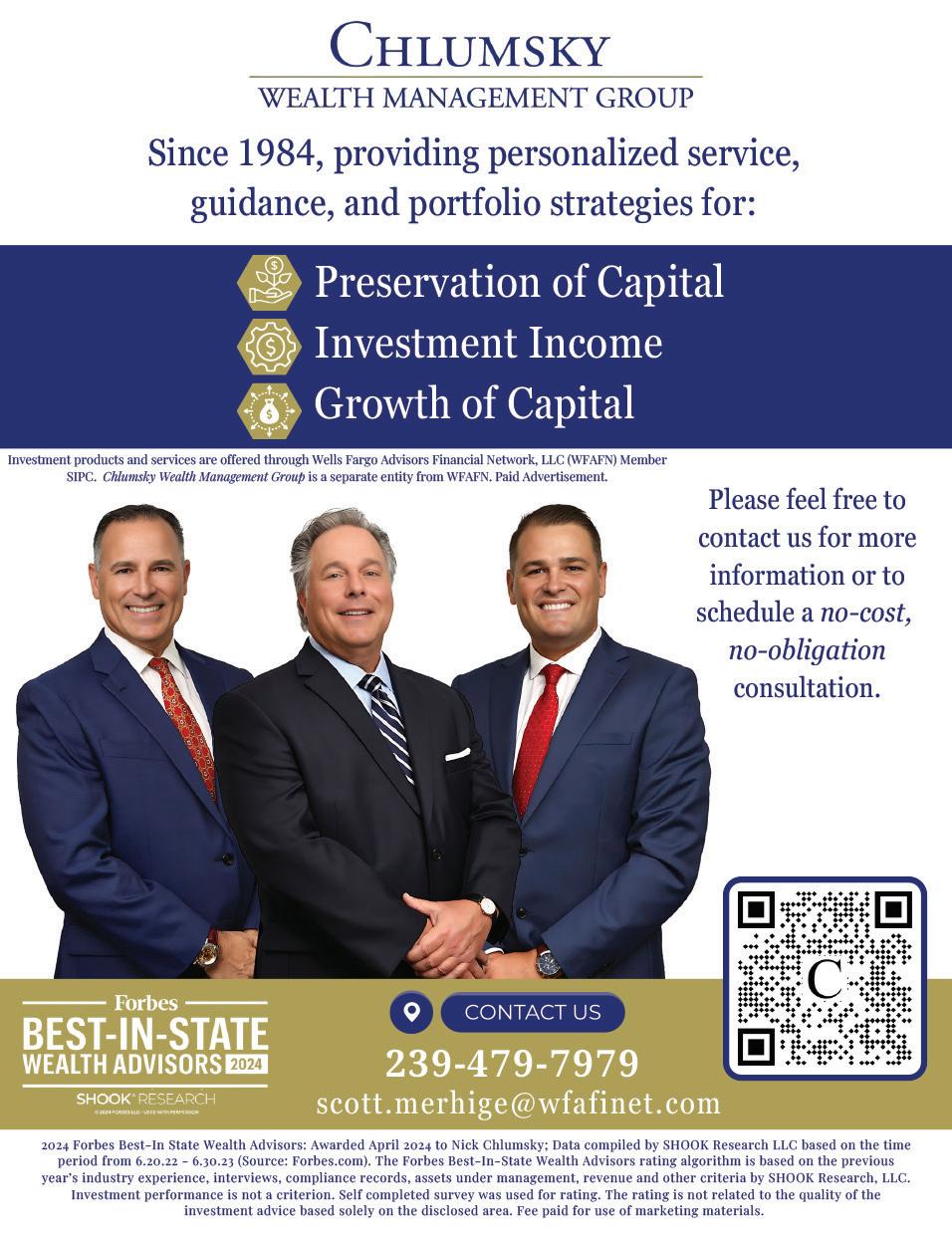

MOTHER’S DAY BRUNCH WITH ERIC, BROOKE, AND KRISTINE – A SPECIAL DAY CELEBRATING FAMILY.
Title in 2007 fueled me to take golf to another level.” Kristine’s passion for golf was born.
Kristine chose to play golf for the University of Wisconsin – Stout, double majoring in Golf Enterprise Management and Business Administration. Her success led to an internship at Whistling Straits in Sheboygan, Wisconsin, where Kristine continued to build practical knowledge of golf course management.
“At Whistling Straits, the iconic place that had already hosted many major tournaments, I fortunately met mentors who showed me the path to becoming a PGA Pro.” However, winters in Wisconsin meant the golf courses lay dormant for months.
A college golf teammate approached Kristine about moving to Naples together for the winter, and the two caravaned down from Wisconsin and never left! Kristine’s plan was to gain more experience in Golf Operations and return to Whistling Straits. “Living in the Naples area allowed me to research golf communities. SWFL was a competitive golf market, but I immediately appreciated the prospects here.” A colleague from Whistling Straits, who was a Florida Gulf Coast University graduate, connected Kristine with Tara McKenna, the Director of Golf Management at FGCU, opening doors for enticing opportunities to work in the golf industry. Florida became Kristine’s permanent home.
From 2012 to 2015, Kristine learned more about the operations end of the golfing industry as the assistant golf professional at Vasari Country Club,

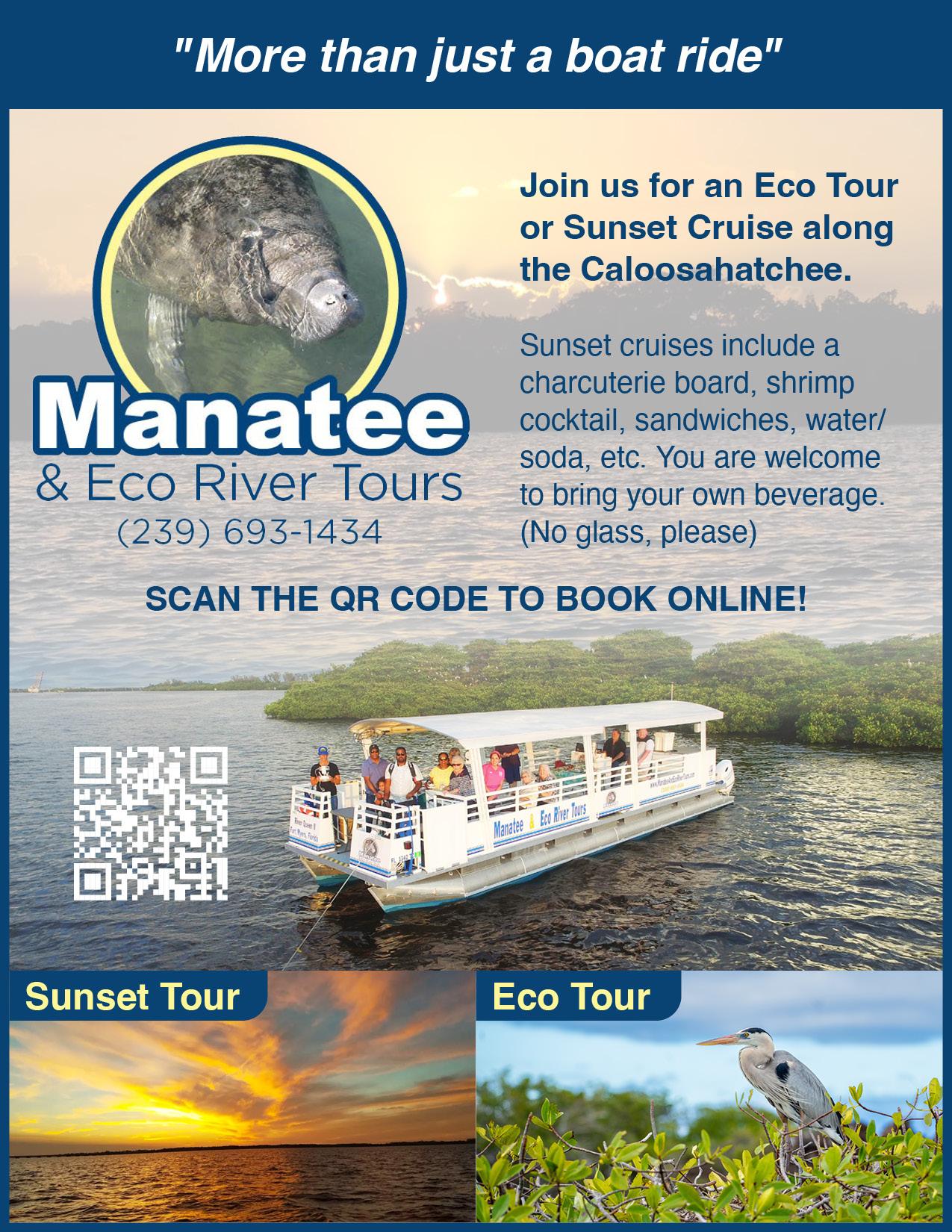
a private golf community in Bonita Springs. Another door opened when Kristine was asked to give lessons. “My first lesson was supposed to be 30 minutes. After that first half hour, my pupil asked if the lesson could be extended to an hour. That first lesson showed me how much I loved helping someone improve. I knew right away I wanted to focus on coaching.” Kristine’s delight, due to the success of that lesson and subsequent lessons where she honed her craft, served to clarify what she wanted to do with her life.
As Kristine watched for coaching opportunities, she continued to build her knowledge of all aspects of the golf industry at Estero’s West Bay Golf Club, where she
served as an assistant pro in 2015-2016. Kristine took another step toward achieving her goals in 2017-2018 at Stonybrook in Estero, exclusively teaching/coaching golf as Lead Instructor. When an opportunity to be the Worthington Head Golf Professional emerged, Kristine assumed that role. During most of her first six years in FL, Kristine coached the Girls’ High School Varsity team at Community School of Naples. Kristine notes, “Each stop was a stepping stone. Every role gave me a different experience. Yet I kept finding myself drawn more and more to teaching.” Little did she know, but each experience was leading Kristine to Heritage Palms.

The COVID years turned a stable job situation into a challenging time in Kristine’s life before she found the silver lining at Golf Galaxy. In the 4½ years Kristine worked for Golf Galaxy, she gained experience with club fitting. She took a deeper dive and built skill in the craft of teaching and coaching as she gave hundreds of lessons. Using a Launch Monitor added dimension and information to strengthen golf swings. Golf Galaxy fit all of Kristine’s goals and her lifestyle as she added her husband, Eric, and then Brooke, her 2-year-old, to her satisfying life. Eric loves to golf, and fortunately, so does Brooke.
A little-known fact: there are only 12 or so Directors of Golf Instruction at all the golf courses in the Fort Myers to Naples area. When one of these positions became available at Heritage Palms late last year, Kristine knew 100% that this could be her dream career. She remembers, “Heritage Palms’ reputation in the golf world was wonderful. The vibe from Bob Kelly was friendly and encouraging.”
Kristine’s first day at HP was December 18, 2024. From January 1 to May 1, she gave 550 lessons and 35 clinics, exceeding her expectations. She says, “It means the world to me to have such overwhelming support in my first season at HP. It’s rewarding to hear that what we’re working on out there together is making a difference.” Comments in HP’s 2025 Member Survey laud Kristine’s coaching.
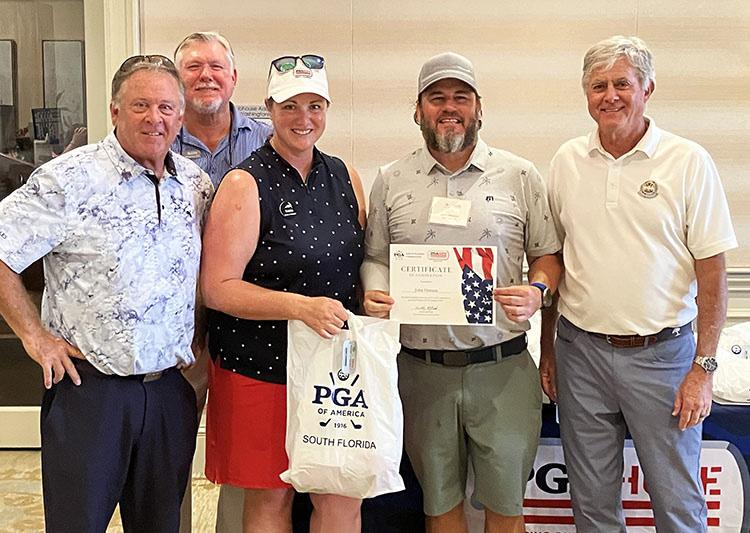
KRISTINE IS PICTURED WITH SOME PGA HOPE INSTRUCTORS AND ONE OF THEIR GRADUATES. SHE’S PASSIONATE ABOUT GIVING BACK TO VETERANS AND SUPPORTING UNDERSERVED COMMUNITIES, INCLUDING MENTORING PATH 2 FREEDOM, GIRLS IN FOSTER CARE, AND USING GOLF AS A FORM OF THERAPY.
Kristine notes that basically there are two kinds of lessons. The first is a one-off, where the golfer is looking for a quick, simple fix of a specific, isolated issue. She likens the oneoff lesson to a chiropractor who performs a quick adjustment of a patient to relieve the immediate pain. “I love helping with a quick fix if someone needs it, but my real passion is digging deeper into what is holding a player back long-term.” Thus, the second type of lesson is an exploration as to the root cause of a golf game challenge. Kristine sees herself as a coach of all aspects of the game. She believes that 95% of the golf game is training the mind: a pre-shot routine, eliminating over-thinking, and keeping the fundamentals simple, repeatable, and disciplined.
Kristine determines an individual’s learning style, and asks what physical activities a golfer does off the course that might contribute to success on the course. Fundamental, sound golf techniques require time on task. She asserts, “If you can give me 150 minutes a week at the practice facility, broken up however works best, you’ll see real, lasting improvement.” Otherwise, the previous golf swing will prevail. Kristine emphasizes that her goal is not to radically change golf swings or to make everyone’s golf swing look the same. “I want every student to leave with something simple and clear they can build on,” she states. Her goal is to listen and to work in partnership with a golfer to individualize, wholistically working 360 degrees on


MEET BOGEY (5) AND RYDER (4) –BOTH “HAVAPOOS” (HAVANESE –TOY POODLE MIX). WHEN BOGEY WAS A MISCHIEVOUS PUPPY, HE EARNED THE NICKNAME “DOUBLE” ... – A LITTLE GOLF HUMOR.
the fundamentals of golf and variables that golfer can control.
A lesson with Kristine includes coaching for targeted golf results. A video with analysis is taken and emailed for a student’s review of a coaching experience, along with specific goals and results of the lesson. Her goal is to keep the coaching sessions individualized, simple, and sound. Kristine also uses a Launch Monitor to determine swing speed, spin, and distance to aid in swing efficiency.
Lessons and clinic information can be found right on the Heritage Palms website under “Golf.” Here’s the link: https://hpgcc.com/Golf/Golf_ Instruction. She is available all year round.

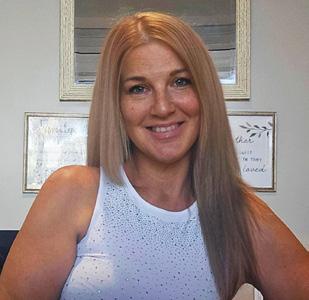
LISA SCHNECK, CPT, CNC, TPI-2, WELLNESS AND ACTIVITIES DIRECTOR LSCHNECK@HPGCC.COM
Most people think of aging as an inevitable downhill slide – a gradual loss of energy, function, and independence. But modern science tells a different story. As time passes for all of us, how we age is surprisingly malleable. The biology of aging is influenced by daily choices, and with the right mindset and habits, we can extend not only our lifespan but also our health span –the years we live with vitality and purpose.
This is the essence of the Living Well Longer Lunch and Learn Series: it’s not just about theory, but about practical application. We combine the latest science of aging with proven behavior-change strategies to help you thrive at every stage of life, making the information accessible and applicable to your daily life.
Why We Age: The Hallmarks of Aging
Researchers studying longevity have identified a set of biological processes, often called the “Hallmarks of Aging.” These hallmarks are the wear-and-tear that gradually undermine our body’s resilience. The most important include cellular senescence, mitochondrial decline, and chronic inflammation or “inflammaging.” Each of these hallmarks plays a role in determining how quickly or slowly we age – and importantly, each is influenced by our lifestyle choices.
Cellular Senescence: The “Zombie Cells” Problem
As we age, some of our cells cease to divide. Instead of clearing out, they linger, releasing signals that accelerate tissue damage and inflammation. Scientists refer to these senescent cells as “zombie cells.”
What helps?
• Regular movement (particularly strength training and interval exercise) encourages the body to recycle old cells.
• Nutritional approaches, such as intermittent fasting or polyphenol-rich foods (berries, green tea, dark leafy greens), may help reduce senescent cell buildup.
• Early research into “senolytics” –compounds that target these cells – is underway, but lifestyle remains the best tool for now.
Mitochondrial Health: Powering Your Cells
Mitochondria are the tiny structures inside your cells that convert food and oxygen into energy. With age, mitochondrial efficiency declines, leaving us feeling tired and increasing our susceptibility to disease.
What helps?
• Aerobic exercise is a proven “mitochondrial booster,” stimulating the growth of new, efficient mitochondria.
• Nutrient density matters: foods rich in antioxidants and cofactors like B vitamins, magnesium, and coenzyme Q10 support mitochondrial function.
• Adequate sleep allows mitochondria to repair and regenerate.
• Cutting-edge research suggests that NAD+ precursors from diet or supplements may help maintain mitochondrial performance.
Inflammation: When the Body Is Always on Alert
The immune system is designed to fight threats and then stand down. But with age, many people live in a state of chronic low-grade inflammation. This “inflammaging” accelerates diseases like arthritis, heart disease, and dementia.
What helps?
• Anti-inflammatory eating: emphasize whole, unprocessed foods; omega-3s (fatty fish, flaxseed, walnuts); and colorful fruits/ vegetables.

• Stress management: mindfulness, breathwork, and social connection lower inflammation markers.
• Consistent sleep: Irregular sleep patterns are directly tied to elevated inflammatory chemicals in the body.
The hallmarks of aging are not isolated from one another. Mitochondrial decline can trigger inflammation, and senescent cells can exacerbate mitochondrial dysfunction. This interconnected web is precisely why lifestyle

is so powerful: small, consistent changes ripple across multiple hallmarks at once.
Think of it like compound interest for your health – tiny daily deposits that compound over time, growing into decades of improved function.
James Clear, author of Atomic Habits , reminds us that “Every action you take is a vote for the type of person you wish to become.” Applying his principles, we can choose to view aging as an active process of growth:
Identity-Based Habits: Shift from “I want to age well” to “I am the kind of person who invests daily in healthy aging.”
Habit Stacking: Attach small practices to existing routines (e.g., after brushing your teeth, affirm “Today I choose health and energy” ).
Environment Design: Surround yourself with cues and people that make healthy, vibrant choices – the easy choices.
By aligning identity, daily actions, and environment, aging becomes less about decline and more about living intentionally with strength and vitality.
If you lived to 100, what would you want to be able to do? Travel? Play pickleball? Carry groceries without effort? Whatever your vision, your blueprint starts now. By implementing our Five Wellness Superpowers: nutrition, movement, sleep/rest, connection and mindset.
November 18th Lunch and Learn
The “Living Well Longer” Lunch and Learn series is held monthly, from October to May, in the Palms Dining Room. Our November 18th seminar is titled “Movement as Medicine” and will focus on the importance of mobility, strength, and joint health. Lunch begins at 11:30 a.m. The total cost (including your buffet lunch) is $20 per person. Register today on the Club Calendar!


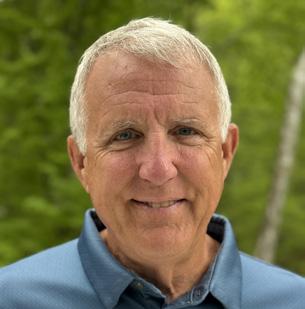
MARK CARTER, FINANCE COMMITTEE AND COMMUNICATIONS COMMITTEE MEMBER MARKBCARTER@MAC.COM
What’s a Budget, Anyway?
Here we are again. As I write this, it’s October 1st—the official kickoff to Heritage Palms’ season. Golf and racquet sign-ups are underway, the staff are wrapping up their off-season projects, the social and dining calendar is launched, and everyone’s eagerly awaiting the grand opening of the Oasis/Tiki facility.
Sounds like nothing but fun ahead, right? Well … almost. October is also the month when the Board of Directors, Finance Committee, and Management roll up their sleeves and tackle the annual budget. If you’ve ever been part of that process, you know it’s less “party on the patio” and more “math in a pressure cooker.”
“Everyone has a plan until they get punched in the mouth.” – Mike Tyson
It’s a Plan!
Another favorite quote of mine is: “Men plan and God laughs.” (Apologies for the sexism, but that’s the quote!) Budgets are just that: plans. They look wonderfully detailed on paper, full of neat numbers and tiny footnotes. And then reality shows up— sometimes in the form of a global pandemic— and lands a haymaker right on the jaw.
That’s why it’s good for members to remember that while we try to stick to the budget, the Club may occasionally have to improvise. Not every detour is another COVID, but surprises are guaranteed.
It’s Full of Assumptions!
When building a budget, management and the Board make a lot of educated guesses. How many members will we have? How many diners? How many rounds of golf? What will inflation do? Will we have enough workers to keep overtime in check—or will half the staff run off to become professional pickleball players? These are just a few of the questions that get baked into the numbers.
It’s a Control Process!
At its core, the budget is a tool for control. The Board is elected to keep the Club running efficiently while preserving the amenities we all enjoy. There are plenty of checks and balances to prevent errors or misuse of funds, but the budget is the big boss at the top of the chain. Spending outside of the approved budget doesn’t happen without oversight. In fact, if an expenditure exceeds certain thresholds spelled out in the Bylaws, it doesn’t just go to the Board—it goes to the full membership. That’s right: sometimes you actually get to vote on something besides whether or not to build a dog park. Wink, wink.
This Year’s Budget Brings Some Unique Challenges
But seriously, last year didn’t exactly follow the script. The Oasis/Tiki opening was delayed, which makes year-to-year comparisons tricky. On top of that, operations were boosted by the Employee Retention Credit (ERC)—a generous but one-time-only financial cushion.
As of today (October 1), the budgeting process is just getting started—the Finance Committee meets this afternoon—so it’s too early to predict the outcome. What we do know is
that the process will be thorough, cautious, and probably involve more spreadsheets than anyone should have to look at in a lifetime. And, by the time you read this, the process may be complete.
So, as we head into budget season, remember: it’s part science, part guesswork, and part ducking the occasional punch. With luck (and good planning), we’ll come out of this round smiling—preferably with both front teeth still intact.

JANE BREISCH, EDITOR
On June 9, the HP Board of Directors distributed its annual Operations Survey through Club Benchmarking, a nationally recognized company that provides data and analysis for private clubs across the country. This member survey has become an important part of our culture—serving as a “report card” from our members on how well we are meeting expectations and fulfilling our mission.
Results are in, and have been communicated with you on September 12. There are 255 pages of member comments listed at the end of the survey results. Some of these comments reflect misunderstandings or misconceptions of HP in several areas which I’ve attempted to address below:
STATED MISCONCEPTIONS REGARDING OVERALL COMMUNICATIONS:
Between the Palms Comments • I would like a printed edition of Between the Palms and would be willing to pay for it.
• We know it’s expensive to mail but it would be interesting to see how many members open Between the Palms. Loved it when it was a paper newspaper.
As has been communicated in the past, Seabreeze Communications, the publisher of Between the Palms, had historically published, printed, and mailed BTP at NO COST to our members.

Seabreeze transitioned to a digital format due to a number of reasons … as noted in the article Between the Palms Going Digital! in the September 2024 edition. To see, go to: https://btp.seabreezecommunications.com/ issue/september-2024/
To clarify, the newsprint edition of BTP is no longer available, however, the digital version has many benefits:
• Wider Reach: Any adult with an email address in HP’s data base will receive their own copy.
• Mobile Accessibility: BTP will be available on your laptop, tablet, or cell phone, whichever you prefer.
• Only one BTP per month. Since it will be in a digital format, there’s no limit on the number of pages available for copy and photos. So, there will no longer be a need for BTP EXTRA.
• Interactivity and Engagement: Links will be clickable, and can include email links, links to HP’s website, videos, etc.
HP Directory Comments
• Finding members in the Directory by address, in addition to last name, would be very helpful.
• To find members by last name and address.
• Would love to be able to access members by last name AND address.
Our current online Directory DOES allow you to search by name AND address. Go to https://www.hpgcc.com/Roster/Roster.aspx.
At the top of the “Club Roster” page there is a “search” option which includes Name and ADDRESS. It defaults to name when opened, so you have to change the search option to “address.” Then simply type in the specific address or the street you’re looking for. See below…
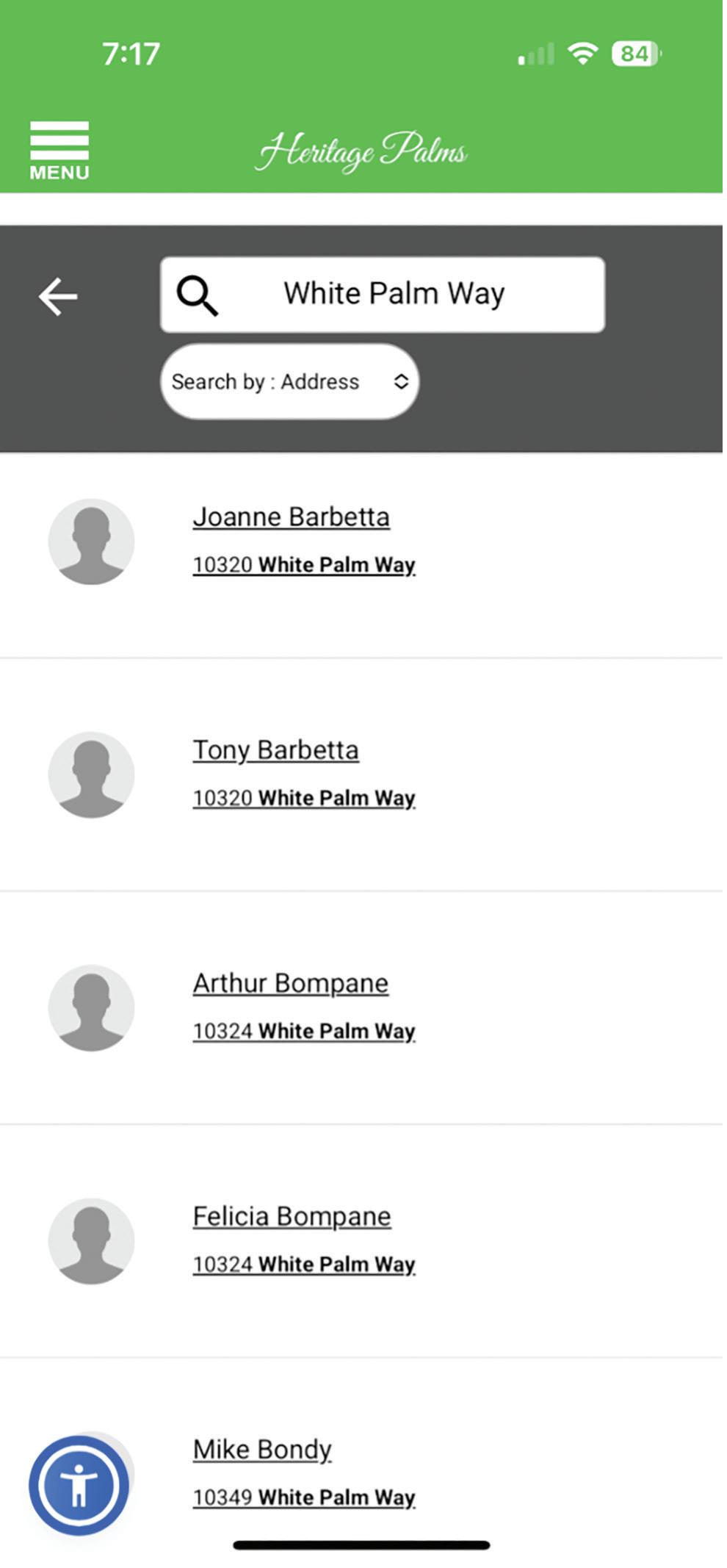
• A more automated way of alerting security to guests or vendors. Calling and getting a voice mail to leave information seems a bit dated.
Our current website has always had a Visitor Management tab, which is an “automated way” of alerting security to guests and vendors. Go to: https://heritagepalms. gatehouseportal.com/Home/Index/
Once logged in, you can register guests or vendors, and the length of time they’ll be visiting. See below…

Something new: In addition to the above, HP just announced that the Visitor Management System is now accessible through the GateHouse Solutions®
Resident Phone App. This app allows you to conveniently manage your visitor list and view your account profile directly from your smartphone.
• Download the app from either the App Store (iOS) or Google Play (Android) by searching GateHouse Solutions or TEM Systems.
• Once installed, log in using the same username and password you currently use for the resident web portal.
• Client Code: 195195
• Have better guidelines for the Facebook app. Too often, a handful of members use it to stir the pot concerning events happening in the community, misrepresent what is going on, spread gossip, border on defamation of someone’s character, and generally promote division.
For clarity, please note that the Club has only one official Facebook page and one official Instagram page. While other pages may exist and appear to share Club-related information, these are private groups run by Members. Club Management and Staff are not involved with these groups and are not responsible for their content.

Links to the official business pages managed by the Club can always be found at the bottom of Traci’s Friday Blast, or by searching @hpgolfandcountryclub within Facebook or Instagram.
• Monthly financials do not have a balance sheet or income statement. These are the most valuable pieces of information. • More information about the club’s financials. Lack of transparency. Could have a monthly financial Q and A section.
HP’s monthly financials, which are posted on the HP website, are some 35-38 pages long. They begin with an overall “Financial Overview” which highlights our Revenue Breakdown by Department; Cost of Goods Sold; Accounts Receivable Aging Analysis; Capital Improvement and Reserve Expenditures; and Other Income and Expenses. In addition, there is a Treasurer’s Report; Resales and Transfers listed; and 2025 YTD New Capital, CIP & Reserve Spends. There are INCOME STATEMENTS as well – broken down by specific departments, and include a Monthly Variance Report. Lastly, at the end of the report there is a BALANCE SHEET. Check it out here: https://www.hpgcc.com// getattachment/3942ecd1-5700-4656-89576b79cea9cea3/July_2025_Financials.aspx.
In addition, our Annual Budget is also posted on the HP website – https://www.hpgcc.com// getattachment/048f653d-275c-45c8-80d89a5262ace311/2025_Budget_Presentation. aspx.
Finance Committee member, Mark Carter, launched a column in Between the Palms this year titled Between the Numbers to help members better understand our finances, and to promote “financial transparency.” See his September, 2025 article here: https://btp. seabreezecommunications.com/2025/08/19/ between-the-numbers-lifes-great-mysteriessolved-sort-of/. Also, check out his most recent article, It’s Budget Season! on page 18.
Stated misconceptions regarding the Activity Center Library:
• “I would like more large print books.”
• “Need to grow the library book selection.”
• “Very good selection of books; would like to see more Steven King though.”
• “The inventory is getting old and needs a ‘refresh.’”
All of the above comments are made assuming HP supplies books to our library. That is simply not the case. ALL of the library inventory – fiction and nonfiction books, CDs, and movies – are DONATED by HP members… none are purchased by the Club. We can’t dictate what books members contribute… we have no say whether they are large print or Stephen King! We’re just grateful for all books that are donated by our generous HP members!
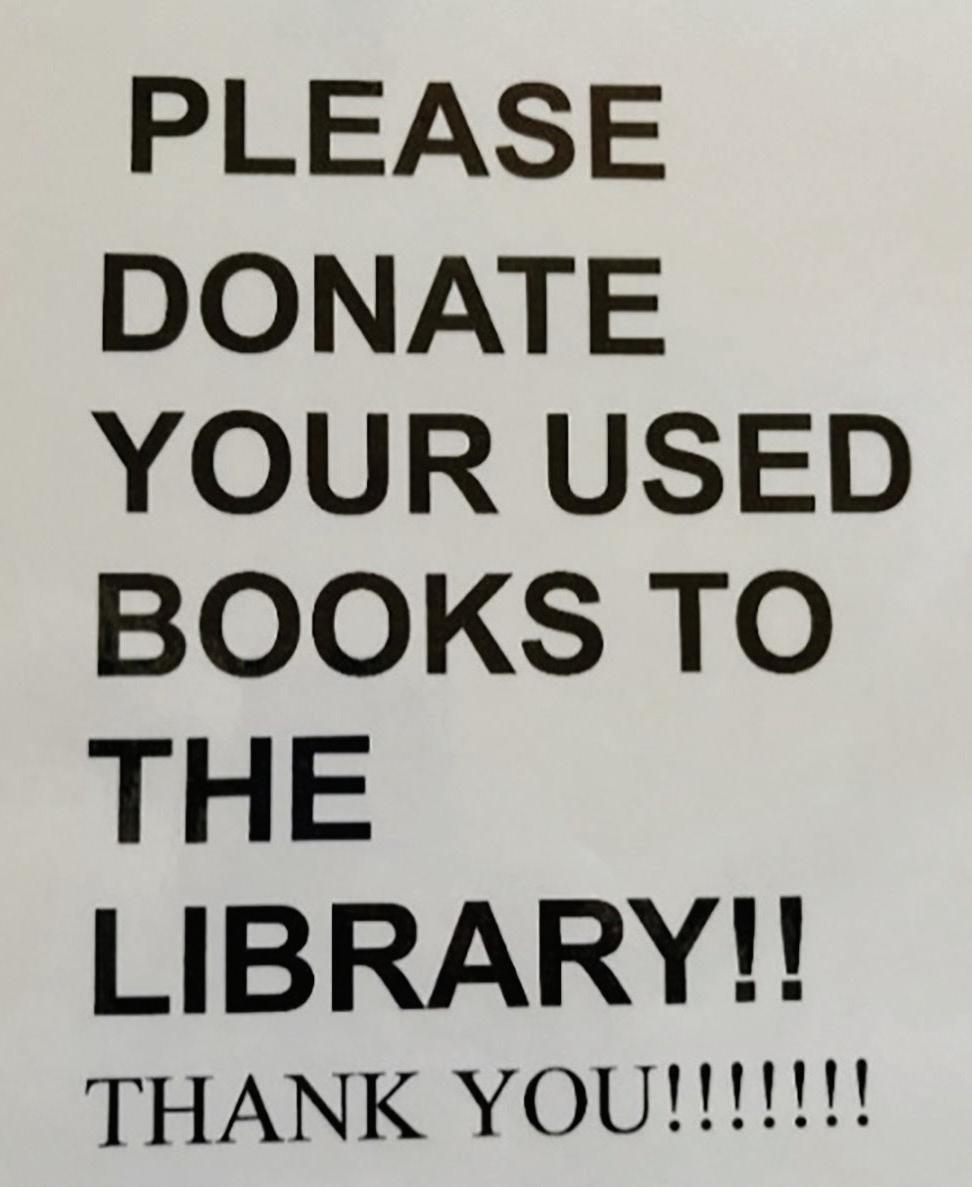
• Need to include books that are more than ten years old and in good condition.
• The older books could be donated to organizations/entities in need.
Library volunteers routinely go through our inventory and pull any books that are older than ten years and DONATE them to many worthy organizations and non-profits for resale. We simply don’t have the space in the Activity Center to house older books.
Editor’s note: The 2025 Member Survey results are now available and posted on our website www.hpgcc.com. Go to MyHeritagePalms>Documents>Survey Results. Please note, due to the size of this document, it may take several minutes to load.

The Laughter Club is hosting Chad Thornsberry on November 15 in the Palms Dining Room. Doors open at 6 p.m., with dinner served at 6:30 p.m. Price is $50 per person. Simply sign up on our website’s Club Calendar or at the Hostess Desk.
Chad Thornsberry has an instant likeability the second he steps behind a microphone. Chad’s slow pace, conversational style is the perfect backdrop for his hilarious

observations. Drawing on experiences ranging from growing up in a trailer park, being a former public-school teacher, marriage, kids and all of life’s everyday problems, Chad’s own unique view of life has him quickly becoming one of the most soughtafter comedians today.

We’ve been very fortunate to have a great staff of rangers and starters over the years. Some have been with us for over a decade. This is another example of why HP is such a special place for members. We appreciate all of their efforts to make your round of golf a better experience.
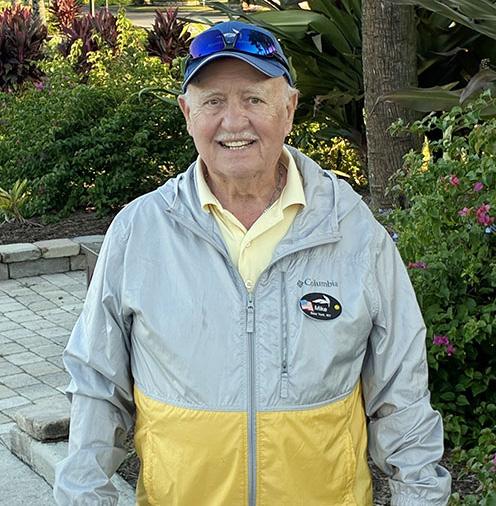



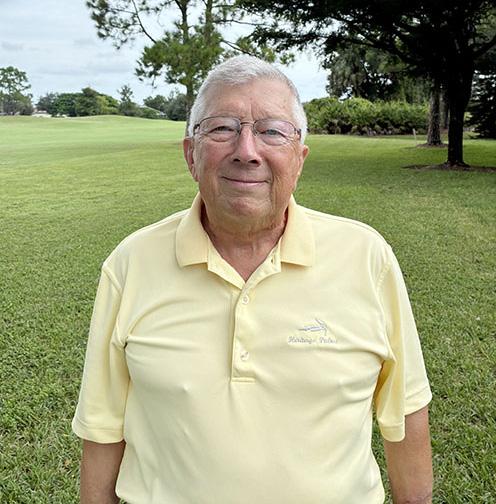



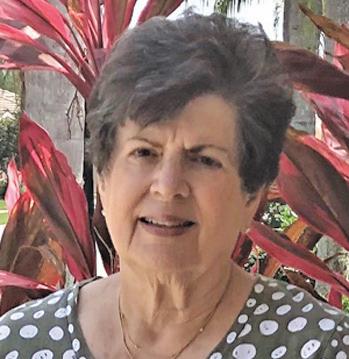
KAREN HARRIS HERITAGEPALMSBOOKCLUB@GMAIL.COM
The HP Book Club will meet on Friday, November 21, at 2:30 p.m. in the Activity Center to discuss Time of the Child by Niall Williams. This finely crafted novel, set in the fictional town of Faha, Ireland, in 1962, explores the themes of second chances, humanity and familial love. The lives of the town’s doctor and his daughter are upended when they begin to care for an abandoned baby found by their neighbor. One reviewer wrote, “While this novel is set at Christmas, it would make for lovely reading any time of year, with a message we’d all like to hear more often.” Doris Orff will lead the discussion.
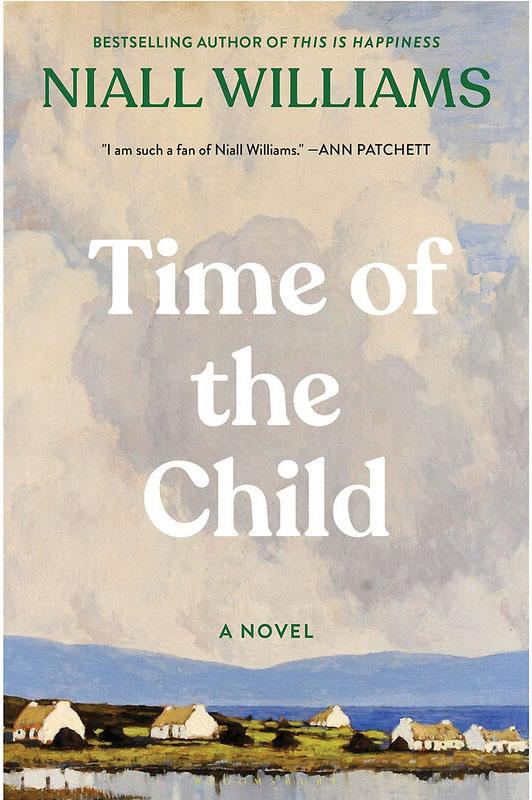
by Niall Williams
Club meetings are open to all residents who read the book. If you wish to be added to the HP Book Club mailing list, please email me.

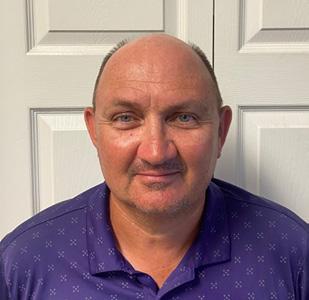
CHAD DYER, DIRECTOR OF RACQUET SPORTS CDYER@HPGCC.COM
In recent years, a new star has emerged on the courts across the United States and around the world—pickleball. This fastgrowing sport has captured the attention of athletes, retirees, kids, and entire families. But while pickleball is gaining fans at a record pace, many still wonder: What makes it so appealing? And how does it compare to its close relative—tennis?
THE BENEFITS OF PLAYING PICKLEBALL:
It’s Easy to Learn, Hard to Master
One of pickleball’s greatest strengths—it’s easy to start playing for pure beginners. With a smaller court, slower ball, and underhand serve, newcomers can quickly get the hang of the basics. But that doesn’t mean it’s boring—more experienced players engage in fast-paced, strategic rallies that demand agility, coordination, and mental sharpness.
It’s Great for All Ages and Abilities
Pickleball is accessible. The smaller court size, lighter paddles, and wiffle balls make it ideal for people of all fitness levels. Seniors appreciate the reduced physical strain compared to tennis, while younger players
enjoy the quick action and competitive nature. It’s a rare sport where a 70- year-old and 16-year-old can be evenly matched.
It’s Joint-Friendly Movement
Unlike high-impact sports like basketball or running, which involve repetitive pounding on hard surfaces, pickleball’s smaller court and lighter movements reduce the strain on your knees, hips, and ankles. The underhand serve and compact strokes are also gentler on the shoulders and elbows compared to sports like tennis, where powerful overhand swings can lead to overuse injuries. This joint-friendly nature makes pickleball especially appealing to older adults, people recovering from injury, or anyone looking for a more sustainable way to stay active.
It’s Social and Community-Oriented
Pickleball isn’t just a game—it’s a social hub. Courts are typically busy with people of all ages chatting between games, offering encouragement, and rotating in for doubles matches. The community atmosphere is one of the most praised aspects of the game, helping players forge new friendships and stay mentally sharp.
Like all exercise, pickleball releases feel good endorphins, but the social connection and fun factor enhance its mental health benefits. It offers a way to relieve stress, stay engaged, and enjoy competition without the pressure often found in more formal sports settings.
Pickleball and Tennis: Siblings
Pickleball and tennis are often compared, and for good reasons.
• They share DNA—both are racquet sports, played on similar courts, and built on the foundations of hand-eye coordination, footwork, and strategy.
• Both are played on a court with a net, either indoors or outdoors.
• They can be played as singles or doubles.
• The strokes from pickleball can carry over to tennis—and vice versa.
• Both sports reward smart positioning, timing, and tactical decision-making.
• If you find a tennis court, a pickleball court will be nearby.
• The governing body of tennis, United States Tennis Association (USTA) for many decades has offered a teaching certification for tennis pros through its sibling company—United States

Professional Tennis Association (USPTA). Around five years ago, USPTA started offering pickleball teaching certifications as well. Within the past year, USPTA has changed its name to Racquet Sports Professional Association (RSPA).
While tennis is often seen as the more traditional and prestigious of the two, pickleball brings a casual, inviting energy—just like a younger sibling who breaks the mold but keeps the family spirit alive.
Pickleball’s popularity isn’t a passing trend—it’s a movement. With its blend of accessibility, fitness, fun and community, it’s no surprise that so many people are picking up paddles. And while pickleball and tennis have their differences, they are not competitors—they are companions. Like siblings, they push each other, borrow from one another, and ultimately share a love for the game.
Whether you grew up playing tennis or are brand new to paddle sports, pickleball offers something for everyone. And with every serve, rally, and laugh on the court, it’s clear this sport is here to stay.
LOU BOTTITTA
LBOTTITTA@GMAIL.COM
The Heritage Palms Charitable Organization, Inc. (HPCO) —a 501(c) (3) dedicated to supporting Heritage Palms employees experiencing unusual, unexpected expenses—is excited to announce its 4th annual dinner dance to be held on January 31st.
Dinner Dance: Night at the Disco Saturday, January 31, 2026

Back by popular demand! Step into the 60s & 70s with sparkling wine on arrival, wine at your table, a special dinner, and nonstop dancing to disco classics. Disco attire encouraged!

Catch the Disco Fever – check out some photos from last year’s celebration.

With Easter falling late and the golf calendar packed, we’re pausing this year—but stay tuned for a big return in 2027!

Your participation makes a difference. Whether you join us on the dance floor, play a round of golf or donate directly, everything you do helps support our Heritage Palms employees in need.
For more info go to: www.HPCOnonprofit.org


HISTORY FACTS BY JANE BREISCH, EDITOR
Nearly 80 years after the final shots were fired, the shadow of World War II continues to loom large over the modern world. The scale and impact of the conflict were so profound that the story of this chapter in history has been retold in countless books, films, TV shows, video games, and more.
It’s not difficult to understand why: From 1939 to 1945, World War II plunged nearly every part of the globe into a violent clash that altered the course of history, impacting virtually every aspect of human civilization, from politics to art to science. Here are nine facts about World War II that every history buff should know.
The Father of Computer Science Spent the War Cracking Nazi Codes
In 1940, the Germans began communicating using a nearly unbreakable code, encrypted with a machine called Enigma that rendered it indecipherable to nearly every Allied codebreaker. The complex cipher was finally broken by British mathematician and scientist Alan Turing, who later developed the mathematical framework for modern computer science. Working with a team of cryptanalysts, Turing built a computing machine called the Bombe that was capable of
deciphering the Enigma code. Thanks to the breakthroughs of Turing and his colleagues, the British were able to decode encrypted Nazi messages in less than an hour, a development that changed the course of the war.
Indigenous Volunteers Defended the Coast of Alaska from Invasion
In June 1942, roughly six months after the attack on the naval base at Pearl Harbor, HI, Japan launched another attack against the United States by invading the Aleutian Islands in Alaska. In response, the U.S. military turned to Alaska’s Indigenous communities to help guard the vulnerable territory, as they had the experience and expertise required to navigate the vast, forbidding landscape of the Alaskan coastline. The Indigenous volunteers who joined this Alaska Territorial Guard came from several tribes throughout the region, including the Yup’ik, Inupiaq, Tlingit, Aleut, and Tsimshian peoples. In addition to defending the Alaskan coastline, the Alaska Territorial Guard protected vital supply routes between the U.S. and Russia.
Following the successful Allied invasion of Normandy on D-Day, Allied forces continued inland to liberate occupied France and Belgium from the Nazis. As more than one million Allied troops continued to move inland, it became increasingly difficult to transport supplies from the port cities to the soldiers pushing east, especially after Nazi forces destroyed a crucial Belgian port in Antwerp. To solve this problem, the Allied forces established a trucking route known as the “Red Ball Express.” These trucks were predominantly driven by African American soldiers who braved treacherous terrain and the threat of German aircraft to keep Allied soldiers stocked with crucial supplies. The trucking route of the Red Ball Express eventually stretched all the way from Normandy to the French-German border, and drivers would often make the journey almost entirely without stopping to transport their cargo to the front as quickly as possible.
The American armed forces were racially segregated throughout the war, with black and white soldiers serving in separate units. Due to discrimination, black soldiers were often relegated to support roles in the service of white
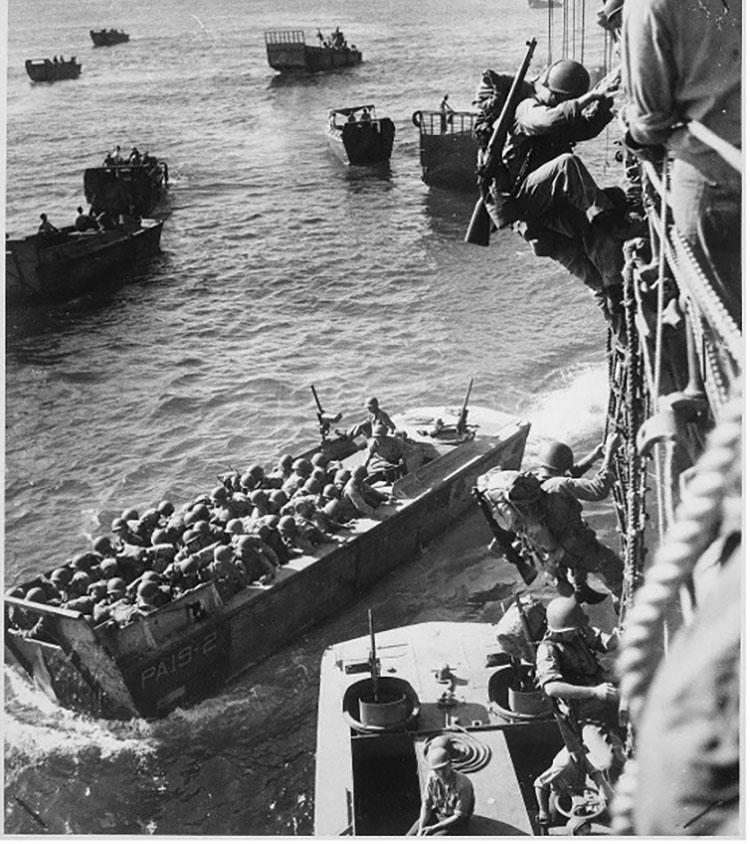
troops. However, the bravery of units such as the Red Ball truckers and the legendary Tuskegee Airmen, a decorated group of African American fighter pilots, helped persuade President Harry Truman to integrate the U.S. military shortly after the war.
When the United States entered World War II in 1941, Americans from all walks of life, including professional athletes, enlisted in the armed services. Some of the greatest baseball players of all time put their careers on hold to support the war effort, including Hall of Famers Joe DiMaggio, Hank Greenberg, and Jackie Robinson. One of the most notable major leaguers to serve in the war was legendary hitter Ted Williams, who served in both the Navy and the Marines as a fighter pilot. Williams proved a highly
skilled pilot, and even returned to military service during the Korean War, where he flew combat missions with future astronaut John Glenn.
A Hollywood Icon Invented a Torpedo Guidance System
Austrian-born actress Hedy Lamarr was already a movie star in Hollywood as World War II was looming in Europe. In 1942, in an effort to help the fight against fascism, Lamarr helped invent a novel torpedo guidance system called “frequency hopping,” which allowed for long-range weapons guidance that was resistant to torpedo jamming from the enemy. While the U.S. Navy ultimately decided against using Lamarr’s invention in the war effort, her ingenuity didn’t go to waste. The frequency-hopping technology laid the foundation for future technologies such as Bluetooth and WiFi, and in 2014, Lamarr was inducted into the National Inventors Hall of Fame.
The U.S. Government Established an Entire Town to Build the Atomic Bomb
As part of the top-secret Manhattan Project, the U.S.-led research project aimed at developing an atomic bomb, the United States government constructed an entire town in Tennessee, known as Oak Ridge, in 1942. Oak Ridge was home to multiple factories and other industrial facilities that produced the materials needed to build nuclear weapons. The
work being done in Oak Ridge was so secretive that most of the town’s residents didn’t know what exactly they were working on. With the exception of a few high-ranking scientists, most people employed in the town’s science and energy facilities were given a set of instructions for how to do their jobs, but were not told the purpose behind the tasks.
The United States Was Involved in the War Before Pearl Harbor Although the United States didn’t officially enter World War II until after the Japanese attack on Pearl Harbor in 1941, the U.S. government still found ways to support the Allied war effort. In 1940, President Franklin D. Roosevelt signed the Lend-Lease Act, which authorized the U.S. to lend weapons to the Allied powers, particularly Great Britain. The Lend-Lease Act allowed the United States to remain technically neutral while still supporting its European allies in the fight against the invading German army. This tenuous policy of neutrality continued until the attack on Pearl Harbor on December 7, 1941. By the next day, the U.S. had declared war on Japan, and just three days later it fully joined the conflict by declaring war on Germany and Italy.

Although China’s contributions to the Allied war effort are often overlooked in the West, China was the first nation to engage in combat against an Axis power. China had been fighting against Japan’s encroaching imperialism in mainland Asia since 1937, two years before the official beginning of World War II. When the global conflict broke out, China joined the Allied powers by continuing to fight its island neighbor. More than 14 million Chinese civilians and soldiers were killed in battles throughout Asia over the course of the war. When World War II ended, China was not involved in the Allies’ peace negotiations with Japan, and to this day the two nations have never officially signed a peace treaty to mark the end of their wartime conflict.
During World War II, the German rocket scientist Wernher von Braun was the leading engineer behind the development of the deadly supersonic missile known as the V-2 rocket . Development began in
1936, and by 1944, the Nazis were using the missiles to deliver devastating attacks against France, England, and Belgium. At the time, the V-2 was the most advanced ballistic missile in the world. Its innovative use of liquid rocket fuel enabled it to reach speeds up to 3,500 miles per hour and strike from distances of 200 miles. It was also equipped with an onboard computer-based guidance system that allowed it to strike with deadly accuracy. The technology that allowed the V-2 to reach these stunning altitudes and travel with such accuracy also made it the forerunner to modern space rockets.
After the war, NASA brought von Braun to the United States, where he used his expertise in rocketry to become one of the leading scientists in the U.S. space race. Though von Braun’s ties to the Nazis tarnished his reputation for the rest of his life, his contributions to the space race earned him high honors from the U.S. government, and he remains a controversial figure in the history of space travel.

From Jan Donaldson: My daughter, Katie, and I attended the U.S. Open Tennis Tournament on September 2 and 3rd in Flushing, NY to see the quarterfinals. We watched a lot of tennis in those two days.
WE WERE ABLE TO SEE MY FAVORITE, NOVAK DJOKOVIC PLAY, AND WIN. WE WERE ALSO ABLE TO SEE CARLOS ALCAREZ PLAY IN THE QUARTERS, AND WERE ALSO ABLE TO WATCH HIM CLOSE-UP DURING PRACTICE.


IN ADDITION TO ALL THE QUARTERFINALS, WE WERE ABLE TO WATCH VENUS WILLIAMS PLAY HER DOUBLES MATCH AND CATCH SOME VERY INTERESTING WHEELCHAIR TENNIS.
After two days in Flushing, we went to Manhattan and saw a lot of sites as “first timers.” My bucket list thing was to be on the Today show. We arrived at 5:30 a.m. with a posterboard sign for my 70th birthday. Because we were there so early, we were assured of being on camera and after looking at our sign and talking to us, they decided they would give us a speaking part. We had to say “traveling from Fort Myers FL.” We had to stick to the script.

From Cynthia Cooper: I came down to HP for a few days in September. I went fishing on the afternoon of the 18th… who says you can’t catch bass in the middle of the day?! I caught this one in the canal near the Sabal 7 tee boxes.

From Lou Bottitta: Jan Donaldson, Carol Wetzell, Don Gallo, and I went to Delray Beach for the Davis Cup. Unfortunately, we were evacuated from the stadium because of a lightning storm. Too bad, the USA lost to Czechia 3-2.

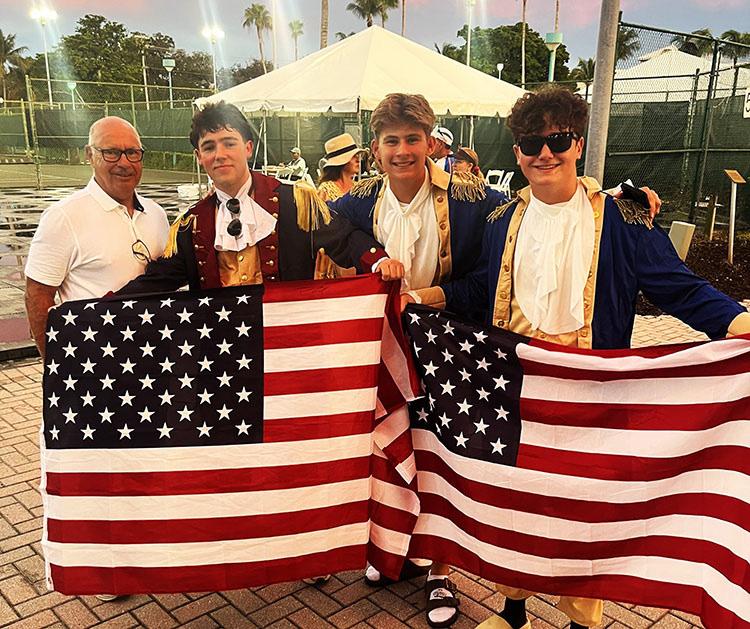
From Melanie Roetting: Canadian friends, Elaine Dupuis and Sue Allison, invited five of us from HP to Niagara on the Lake in September. The golf was challenging, the scenery beautiful, and our friendship more than special. We stayed at the South Landing Inn, went to Niagara Falls, and visited several local wineries.
L-R: Diane Germani, Elaine Dupuis, Jamie Unger, Kathy Hazard, Barb Barlow, and Melanie Roetting.
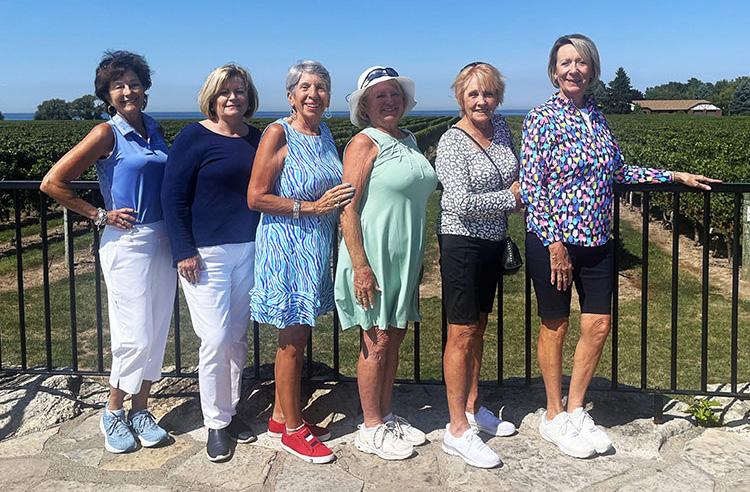

ENJOYING A GLASS AT NOMAD AT HINTERBROOK WINERY
(L-R): JAMIE, KATHY, MELANIE, DIANE, ELAINE, AND BARB.
From Kathy Hazard: HP’s Director of Instruction, Kristine Bonham, took 11 HP members on a reciprocal to West Bay Club in Estero on September 24.

COMPILED FROM HISTORY FACTS BY JANE BREISCH, EDITOR
1800: John Adams vs. Thomas Jefferson
If anything proves that partisan politics and electoral machinations are nearly as old as the United States itself, it’s the election of 1800, when Federalist Party incumbent President John Adams sought reelection against Democrat-Republican Vice President Thomas Jefferson. The already-bizarre premise of opposing parties holding the presidency and vice presidency was made possible at the time by a law stipulating that the presidential candidate who earned the second-most number of electoral votes became Vice President. In the election of 1796, Jefferson lost the presidency to Adams by only three votes, and the 1800 election was a rematch between the political rivals.
That time, with another narrow margin likely, both parties turned toward influencing electors, whose votes decided the winning candidate in states where there was not yet a popular vote. Jefferson wrote of his intent to sway electors in New York, Pennsylvania, and New Jersey in a letter to James Madison. Federalist Senator Charles Carroll accused Jefferson and his supporters of also attempting to use “arts and lies” to manipulate votes in Federalist-leaning Maryland. From there, the accusations, well, escalated. Jefferson-supporting pamphleteer James Callendar claimed that John Adams was a hermaphrodite. Federalist newspapers accused Jefferson of maintaining a harem at Monticello.
When the votes were finally cast, the election ended in a tie between Jefferson and… his intended running mate, Aaron Burr. How? Each elector had two votes to cast, but there was no distinction at the time between a vote for President versus a vote for Vice President. Casting one vote for Jefferson and one vote for Burr was in effect a vote for each as President. The Constitution called for resolving this tie between the Democrat-Republican candidates with a vote in the House of Representatives, which was controlled by, you guessed it, the Federalist Party.
The task at hand was to vote on who, between Jefferson and Burr, would be President, but the Federalists saw an opportunity to seize power, either by delaying the proceedings past the end of Adams’ term, or attempting to invalidate enough votes to give Adams the majority. Others advocated for supporting Burr. Between February 11 and February 16, 35 rounds of voting took place, each ending in deadlock. Finally, after much lobbying by Alexander Hamilton against Burr, the 36th ballot resulted in Jefferson being appointed President. In the wake of the turbulent election, the 12th Amendment was ratified in order to prevent a repeat ordeal in 1804.
If William Henry Harrison is known today, it’s for the obscurity of his mere 31 days in office. But the campaign leading to his presidency was a rollicking and often rowdy phenomenon that sparked a voter turnout of more than 80%, an increase of nearly 23 percentage points from the previous election.
The election pitted Harrison and running mate John Tyler of the upstart Whig Party against incumbent Democratic President Martin Van Buren during a period of economic strife caused by the Panic of 1837. Harrison’s campaign played off of his military fame for his victory at the Battle of Tippecanoe, with the slogan “Tippecanoe and Tyler Too.” It also attacked Van Buren with accusations of living in aristocratic luxury. The Van Buren campaign and its supporters countered by painting the 67-year-old Harrison as too elderly and frail for the presidency. An editorial in the Baltimore Republican mocked Harrison with the line, “Give him a barrel of hard cider, and settle a pension on him… he will sit the remainder of his days in his log cabin by the side of the fire and study moral philosophy!”
The Whigs, however, embraced the hard cider and log cabin imagery, and built the rest of the campaign around it. They leaned

into the association with the “everyman,” and organized cider- and whiskey-fueled mass rallies. There were songs, stump speeches, and all manner of bric-à-brac emblazoned with cider kegs and log cabins. There were also the 10- to 12-foot slogancovered balls Whigs would roll down the streets while chanting in support of the candidates. It all led to Harrison shellacking Van Buren in the election, albeit not quite as might be expected: The lopsided victory was in the Electoral College, 234 to 60, but the popular vote margin was only about 150,000 votes. No need to pity Van Buren, though. He later remarked, “The two happiest days of my life were those of my entrance upon the office and my surrender of it.”
Incumbent President Ulysses S. Grant’s Republican Party was beginning to fracture leading into the June 1872 National Convention. A reform wing calling itself Liberal Republicans had held its own convention the previous month, nominating New York Tribune founder and editor Horace Greeley as its candidate. Overestimating the power of this new faction, the Democratic Party refrained from nominating its own candidate and
instead threw its support behind Greeley, despite Greeley’s history of pointed criticism of the Democratic Party.
Almost immediately, Greeley was lambasted in the press. The New York Times called the Democratic Convention that nominated him “the ghastliest of political shows.” Political cartoons were especially harsh, depicting him as mousey or infantile. Greeley soldiered on, making campaign stops in New Jersey, Pennsylvania, Ohio, Kentucky, and Indiana between September 19 and 29, and giving nearly 200 speeches in that short span. Unfortunately for the candidate, his running mate Benjamin Gratz Brown completely undermined that effort by giving an incoherent drunken speech at Yale, and then fainting during an event in New York City. The Greeley campaign never really mounted a serious threat to Grant. “I have been assailed so bitterly that I hardly knew whether I was running for the presidency or the penitentiary,” Greeley lamented. Grant won reelection easily with 55.6% of the popular vote. In a bizarre and tragic twist, Greeley died on November 29, before the Electoral College could cast its ballots. Because of this, the 63 votes he would have earned were dispersed among other candidates. It remains the only time in U.S. history that a candidate has died in the interim between the popular vote and the Electoral College vote.
The 1872 election was also notable for another reason: Though not a legal candidate (she was under 35 years old), Victoria
Woodhull also ran in the 1872 election, making her the first woman to campaign for President of the United States.
1964: Lyndon B. Johnson vs. Barry Goldwater vs. a Fabricated “Jewish Mother”
The 1964 presidential election took place less than a year after the assassination of John F. Kennedy; the Vietnam occupation was approaching its midpoint, and segregationist Alabama Governor George Wallace was running a primary campaign in the northern U.S. on a platform of outright racism. Into this fraught atmosphere stepped a wisecracking independent writein candidate named Yetta Bronstein, with slogans such as “We need a Jewish mother in the White House,” A mink coat in every closet,” and “If you want simple solutions, then you gotta be simple.” Calling herself a “Jewish housewife” running for a political party called the “Best Party,” Bronstein managed to attract media attention and invitations for radio interviews, wherein she advocated for increasingly kooky things such as adding “truth serum” to the Senate drinking fountains, and putting a nude photo of Jane Fonda on postage stamps.
Yetta Bronstein was a complete fabrication, though. A character invented by husbandand-wife hoaxers Alan and Jeanne Abel (and played by Jeanne in radio interviews), Yetta was conceived as a way to poke fun at credulous media. In the real world, Lyndon B. Johnson and Barry Goldwater were engaging in some of the most
grueling mudslinging yet, culminating in the legendary Johnson “Daisy” campaign ad (officially titled “Peace, Little Girl”), in which a young girl counts petals as a nuclear countdown cuts to a mushroom cloud. Ultimately, Johnson trounced Goldwater by more than 15 million votes in the popular election, and 486 Electoral College votes to Goldwater’s 52. Yetta Bronstein didn’t get a single vote.
1988: George H.W. Bush and “the Seven Dwarfs”
The 1988 presidential election was an open field, with Ronald Reagan finishing out his last term as President. The primary season on the Democratic side included a slate of relative upstart contenders referred to in overtly derisive political commentary as “the Seven Dwarfs”: Bruce Babbitt, Joe Biden, Michael Dukakis, Richard Gephardt, Al Gore, Jesse Jackson, and Paul Simon. On the Republican side, Vice President George H.W. Bush, Bob Dole, Jack Kemp, and televangelist Reverend Pat Robertson were the contenders, escaping a derisive nickname of their own for reasons that are lost to history.
Almost immediately, the Democratic side was beset with paparazzi-style scandals: Early, pre-Seven Dwarfs contender Gary Hart was caught having an affair with a woman who accompanied him on a luxury yacht called, all too on-the-nose, Monkey Business. Another scandal followed when a tape surfaced with footage of Joe Biden speaking at the Iowa
State Fair and quoting British Labour Party leader Neil Kinnock without attribution. The resulting furor, and Biden’s subsequent mishandling of it, prompted him to drop out of the race. When TIME magazine reported that the tape came from the Dukakis campaign, the campaign initially denied the report, before eventually coming clean. Dukakis aides John Sasso and Paul Tully also stepped down.
Meanwhile, George H.W. Bush was emerging as the Republican nominee, despite receiving frequent criticism for not communicating the priorities of a Bush presidency (“the vision thing,” as Bush himself rather flippantly put it). Once Dukakis became the Democratic nominee, Bush fully dismissed “the vision thing” in favor of Lee Atwater-aided negative campaigning, successfully painting Dukakis as soft on crime with the viciousness of a Thomas Jefferson-John Adams-era series of invectives.
Another enduringly famous attack ad was one that the Dukakis campaign itself unintentionally provided the imagery for. The ad featured an unfortunately goofy Dukakis video op with the candidate perched upon an M1 Abrams tank and wearing a too-large helmet that looked more Great Gazoo than commander in chief. Bush won the election with 53.4% of the popular vote and a whopping 426 electoral votes.

LOU BOTTITTA LBOTTITTA@GMAIL.COM
Gwen’s Wish was created to honor Gwen Berestecki’s legacy of giving back through tennis. Thanks to the generosity of HPGCC members last March, the program is already making a meaningful difference in the lives of young athletes.
The following is an update provided by Paul A. D’Amico, II, USPTA – Elite Pro, and the Executive Director of Lee County Community Tennis Association (LLCTA):


“So far, contributions have supported a Local Fun Day at Rutenberg Park, where high school players came together to build community through the sport Gwen loved. A scholarship has already been awarded to a deserving player, with three additional applications under review and several more expected in the months ahead.
“Looking ahead, Gwen’s Wish will fund a High School Tournament, Camp, and Coaches Workshop in January— expanding access to competitive play, skill development, and mentorship for both
players and coaches. Donations have also gone directly to athletes in the form of clothing, tennis shoes, and equipment, while teaching pros received tennis balls to use in clinics that benefit many local players.”
Each of these efforts reflects Gwen’s generous, out-going spirit—the impact of the contributions by HPGCC members is already visible, and the momentum continues to grow. More information is available at www. GwensWish.com.


ANDREW WEINER WEINER@UKY.EDU
In previous articles I have attempted to provide some concepts and skills relating to emotional intelligence. Having those can help with having a “difficult conversation,” which is defined as a conversation where three elements are present: high stakes, different opinions, and strong emotions. Sound familiar?
There is nothing inappropriate with having conflicting views about a topic; however, if progress is to be made without alienating people, then we must engage in dialogue or the mutual exchange of ideas. Dialogue can be difficult to achieve but, it is essential if we’re going to keep the community from becoming fragmented.
We can walk through the Dialogue Model from Crucial Conversations*, in order to learn how conversations go from dialogue to difficult.
In order to have “dialogue,” both parties must feel emotionally safe. This means that both parties feel comfortable sharing their ideas because they know, even if the other party disagrees, he/she is still listening and showing respect. We call that the “pool of shared meaning” (I listen and understand, even if I don’t agree). As you can see, the pool of shared meaning is more wading pool than Olympic size.
What makes us leave the pool and abandon dialogue?
The stories we tell ourselves make us feel “unsafe.”

Our eyes are like video cameras, so we record our interactions with others and interpret them on the spot. Those interpretations result in feelings and subsequent actions we take toward the other person. If those actions appear threatening to the other person, then that person will leave the pool of shared meaning, and dialogue will cease. Interestingly enough, many of us never question the accuracy of the stories we tell ourselves because we are so convinced we are right. Some of the actions that will cause others to vacate the pool include attribution of motives, viewing situations as either/or, confusing an assumption with an inference, and beginning the conversation with “I am right and you are wrong, so let me tell you how you are wrong.”
How do we know if dialogue has ceased?
The most obvious sign is that the other party becomes “verbally violent” by trying to control the conversation through continual interruptions, labelling your ideas as being unworkable, silly, or stupid, and/or ultimately attacking you through name calling. The less obvious approach is silence or avoiding any discussion, masking behavior such as smiling to your face but,
cursing you under his/her breath, and ultimately withdrawing from the scene emotionally or physically or both.
How can we stay in dialogue even if we disagree with the other party?
1) Be aware of the story you tell yourself about the other person and his/her motives. Examine your story for assumptions that cannot be verified through fact, realize how big a role your values or beliefs play in formulating your opinion, and that your values may be right for you but not for others. Values are not facts.
2) Instead of consistently pushing your opinion, ask the other person to walk you through how he/she arrived at his/ her opinion. Balance advocacy/assertion with inquiry. You may learn more by asking questions. Listen without thinking about what you want to say next.
3) Always show respect for the other person’s opinion, even if you don’t agree.
The bottom line: stay in the pool of shared meaning by making the conversation safe. Start by examining your own story.
*Patterson, Grenny, McMillan, Switzler: McGraw-Hill, 2002.
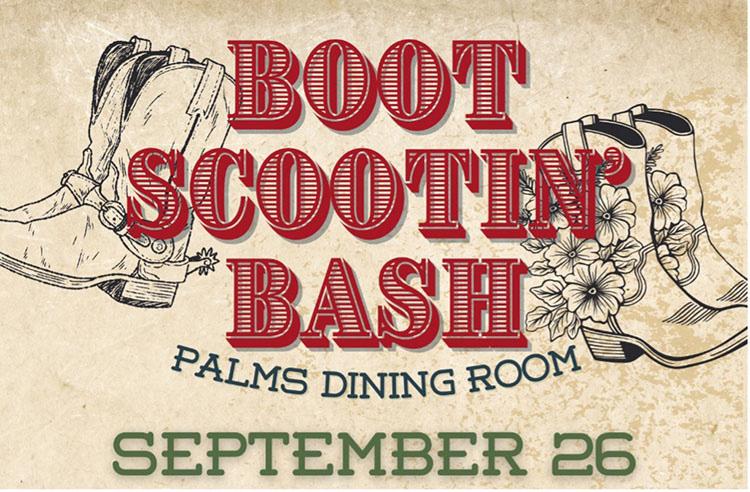
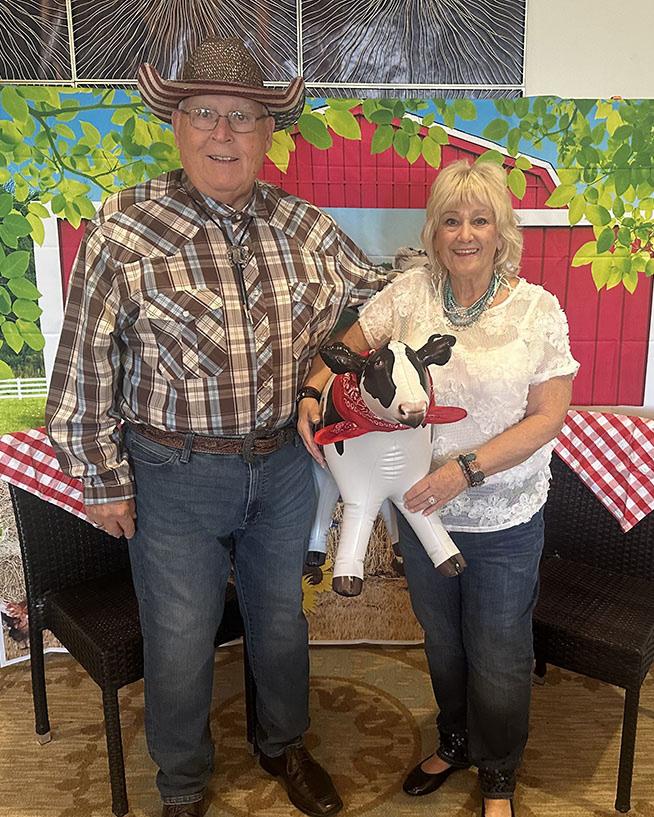



KELLY VECERE, KAREN CUNNINGHAM, LINDA WATSON AND GAILE SHEEHAN.
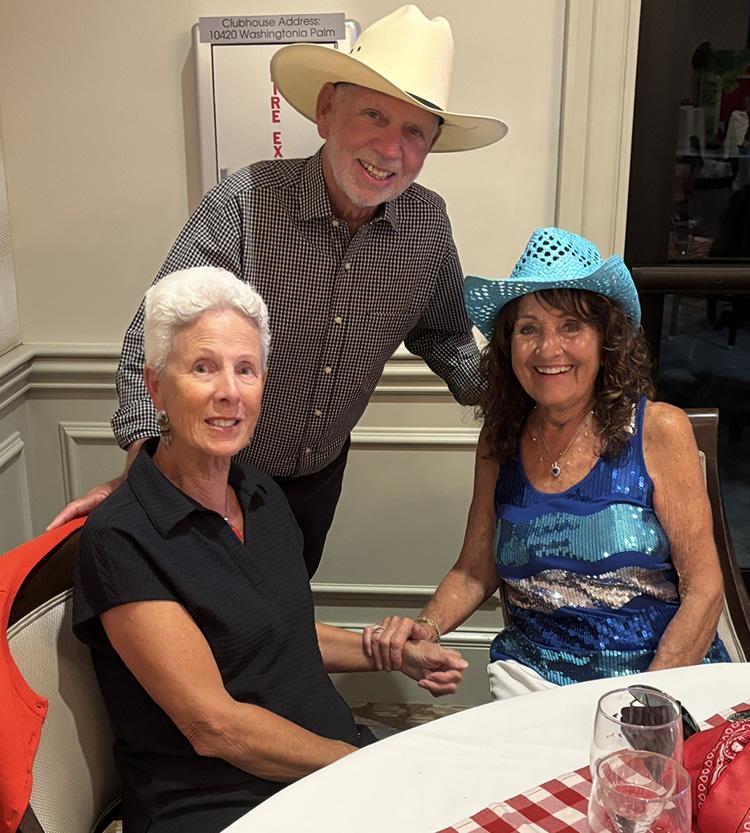
L-R: ALICE AND TED CORCORAN AND MARI LOU MCCANN.






A TRANSPORT TRUCK LOADED WITH OUR OLD CLUB CAR GOLF CARTS ON SEPTEMBER 8.
OUR NEW GOLF CARTS DEBUTED SHORTLY THEREAFTER. THE NEW FLEET IS THE LATEST TEMPO LITHIUM CLUB CAR MODEL THAT JUST CAME OUT THIS YEAR. THIS IS A TOTALLY NEW CART WITH A REDESIGNED DASHBOARD, UPGRADED VISAGE GPS, AND MOST IMPORTANTLY, AUTOMATIC BRAKES!


JUDY DINEHART, CRC MEMBER
JUDITHANN1145@GMAIL.COM
The Community Relations Committee will be providing a wonderful opportunity for you to share some time in the Service of others.
Mark your calendars for January 12, 2026, Noon to 3 p.m.
The Heritage Palms Volunteer Fair will be held in the Palms Dining Room, where you can explore ways to become an active and
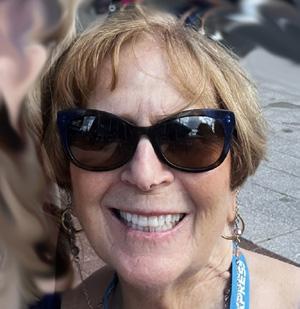
rewarding volunteer in our beautiful Ft Myers Community. We will be hosting a variety of non-profits representing the Arts, Children Support groups, Education and Development, Health, and Human Services. They will be there to meet you, and help you decide how your time, given in a small way, can improve the life of others. With your help, we look forward to another great year of volunteerism!
JAN DONALDSON, ARCHITECTURAL REVIEW COMMITTEE CHAIR JANDON713@GMAIL.COM
Take the time to look at the condition of your house paint. Is it faded? Stained? Dirty? How long has it been since it was last painted? Look at the sides of the house too. That’s where the issues are more apparent.
If you’re new to your single-family home, or haven’t noticed what’s new in your neighborhood, the HEHOA has developed a paint palette. It’s been in use for almost two years. You can see the book in Jill Eaton’s office in the Clubhouse or a member of ARC
can come to your house to help you choose a new paint color.
You may keep your present paint color should you have proof of the current color, such as paint cans or an ARC application. As always, questions can be directed to the ARC committee.

JANE BREISCH, EDITOR
Here are the Fort Myers regional theatre offerings for the coming season. Contact these venues now for the best seats and pricing.

Florida Repertory Theatre, 2268
Bay Street, Fort Myers. The FL Rep is celebrating their 28th season as “one of America’s top repertory theatres” according to the Wall Street Journal. Check their website at https://www.floridarep.org for tickets for the following shows:
• The Rat Pack Lounge By James Hindman and Ray Roderick
Continues through November 16, 2025
ArtStage Studio Theatre
This fresh and funny musical revue celebrates the music of Frank Sinatra, Dean Martin, and Sammy Davis, Jr. In the magical story the famous “rat pack” trio, now in heaven, returns to earth for one special night to treat audiences to over 30 hit songs.
• Doubt, a Parable By John Patrick Shanley
Continues through November 16, 2025
Historic Arcade Theatre
The fireworks begin as the exacting principal of a Bronx Catholic school—feared by students and colleagues alike—suspects improper relations between a charismatic priest and a student. She’s forced to wrestle with what’s fact, what’s fiction, and just how far she’ll go to expose what she sees as the truth.
• The Trial of Ebenezer Scrooge By Mark Brown
December 5 - 21, 2025; previews December 2 - 4
Historic Arcade Theatre
This spirited twist on the classic holiday tale is set a year after Scrooge’s miraculous transformation. Now back to his old ways, Scrooge is suing Jacob Marley and the Ghosts of Christmas Past, Present, and Future for breaking-and-entering, kidnapping, slander, pain and suffering, attempted murder, and the intentional infliction of emotional distress.
• Advice By Brent Askari
December 12 - January 11, 2026; previews December 9 - 11
ArtStage Studio Theatre
A hilarious new comedy follows a married couple, Joy and Ron, who on the eve of their wedding anniversary learn that their idiot friend Gary has written a self-help book
… and it’s getting published! As they muse on the possible topic, Gary turns up, and invites them to try out some of his “couple exercises.”
• Always … Patsy Cline Created by Ted Swindley and based on a true story.
January 9 - 26, 2026; previews January 6 - 8
Historic Arcade Theatre
The heartfelt musical follows the powerful true story celebrating the most popular female country singer in recording history. Patsy Cline’s legendary voice and rise to stardom took America by storm, and this loving tribute is told through the eyes of her biggest fan and unlikely friend, Louise Seger.
• Tuesdays with Morrie By Jeffrey Hatcher & Mitch Albom
January 30 - March 1, 2026; previews
January 27 - 29
ArtStage Studio Theatre
The best-selling book comes to life in this moving autobiographical story following Mitch Albom’s visits to his old professor, Morrie Schwartz, as he battles Lou Gehrig’s Disease. What begins as a simple visit by the career-driven journalist turns into a weekly pilgrimage and a last class on the meaning of life.
• The Play That Goes Wrong By Henry Lewis, Jonathan Sayer, & Henry Shields
February 13 - March 6, 2026; previews
February 10 - 12
Historic Arcade Theatre
This hilarious hybrid of Monty Python and Sherlock Holmes follows a fictitious theatre company’s opening night of The Murder at Haversham Manor where things quickly go from bad to utterly disastrous. Nevertheless, the accident-prone thespians battle against all odds to make it through to their final curtain call, with hysterical consequences!
• Little Shop of Horrors By Howard Ashman and Alan Menken
March 20 - April 12, 2026; previews March 17 -19
Historic Arcade Theatre
The musical is based on the 1960s B-movie by Roger Corman and features book and lyrics by Howard Ashman and music by Alan Menken. The story is packed with laughs, thrills, chills, and Motown and doowop-inspired hit songs and follows downon-his-luck Seymour who pines for his beautiful co-worker at Mushnik’s Skid Row Florist.
• Denise Fennell’s The Bride: Or, Does This Dress Make Me Look Married? By Rick Pasqualone
April 10 - May 10, 2026; previews April 7 - 9
ArtStage Studio Theatre
Tour-de-force actress Denise Fennel, the scrappy Sister from last summer’s Late Nite Catechism, tackles the meaning of love, life, and the ritual of marriage. Drawing inspiration from her own life – and the advice of the audience – “The Bride” tackles the decision of a lifetime: Will she, or won’t she?

Players Circle Theater, 13211 McGregor Blvd, Fort Myers (only about 20 minutes from HP!).
Started by FL Repertory Theatre founders Bob Cacioppo and Carrie Lund, Players Circle is in its eighth season. Check their website at https://www.playerscircle.org for tickets for the following shows:
• RUMORS A Neil Simon farce. Continues through November 16
At a posh New York townhouse, the Deputy Mayor’s self-inflicted gunshot wound and his wife’s disappearance spark chaos. As four couples arrive for an anniversary
party, secrets unravel and confusion reigns. Misunderstandings multiply in this fast-paced farce filled with cover-ups, rumors, and nonstop comedic twists.
• Ho! Ho! Ho! The Christmas Show Created by Robert Cacioppo
December 5 - 21, 2025; previews December 2 - 4
A favorite holiday tradition is back and better than ever! Come celebrate the most wonderful time of the year with this original musical revue brimming with love, laughter, and all your favorite holiday songs.
• Little Women Based on Louisa May Alcott’s Classic Novel January 9 - February 1; previews January 6 - 8
A story that swept the nation is brought to life in this epic musical! Full of showstopping melodies and uplifting spirit. This timeless tale about the enduring power of family is guaranteed to capture your heart and astonish!
• Over the Tavern By Tom Dudzick February 13 - March 8; previews February 10 - 12
A beguiling family comedy set in Buffalo in the Eisenhower 1950s. The Pazinski family has a lot going on in their cramped apartment over Dad’s bar. But all hell breaks loose, when 12-year-old, wise-cracking Rudy questions being Catholic.
• 4,000 Miles By Amy Herzog
March 20 - April 5; previews March 17 - 19
A Pulitzer Prize Finalist! After a cross-country bike trip, young Leo makes an unplanned visit to his feisty 91-year-old grand-mother Vera in her Greenwich Village apartment. Over the course of a single month these unlikely roommates, infuriate, bewilder, and ultimately reach each other in this charming dramedy.
• I Loved, I Lost, I Made Spaghetti
By Giulia Melucci
April 17 - May 3; previews April 14 - 16
This tasty comedy invites you into Giulia’s kitchen as she recounts a string of botched romances and failed love affairs while preparing a home cooked meal.

The Broadway Palm Dinner Theatre, 1380 Colonial Blvd., Fort Myers. (239) 278-4422. Check their website at https://broadwaypalm. com/. for tickets for the following shows:
• Pretty Woman, the Musical Continues through November 15, 2025
• A Christmas Story, the Musical November 21 to December 28, 2025
• Fiddler on the Roof, the Musical January 3 to February 14, 2026
• Cats February 20 to April 4, 2026
• All Shook Up – Featuring the Songs of Elvis Presley April 10 to May 16, 2026
• The Sounds of 1967 – A Summer that Changed Everything May 22 to June 20, 2026
• The Wizard Z June 26 to August 8, 2025

Barbara B. Mann Performing Arts Hall, 13350 FSW Parkway, Fort Myers. For further info on their 2025-26 Broadway Series go to: https://www.bbmannpah.com.
• Some Like it Hot – January 13 to 18, 2026
• & Juliet – February 3 to 8, 2026
• Back to the Future, the Musical –February 17 to 22, 2026
• Mamma Mia! – March 10 to 15, 2026
• Kimberly Akimbo – April 1 to 5, 2026
• Moulin Rouge, the Musical – April 7 to 12, 2026



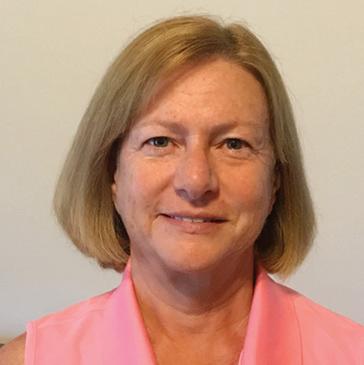
JUDY KENT, LNHGA PRESIDENT JUDYKENT26@GMAIL.COM
JOIN THE FUN, FRIENDSHIP, AND FESTIVITIES THIS NOVEMBER!
The Ladies’ Nine Hole Golf League is teeing off its fall season with a burst of excitement and fun, starting Wednesday, November 5! Whether you’re a seasoned pro or new to the greens, get ready to swing into a season filled with laughter, friendly competition, and vibrant camaraderie.
Mark Your Calendars for the following funfilled events:
• November 5 – Opening Day: Grab your clubs and join your fellow members for the first round of league play. Expect plenty of cheers, high-fives, and maybe even a surprise or two to kick things off!
• November 12 – Welcome Back Luncheon: Let’s celebrate in style! Wear your best “fall” colors and join us for a festive lunch packed with delicious food, laughter, and autumninspired décor. Share your summer stories and make new memories with friends old and new.
• November 19 – Patio Social: After your round, gather on the grill room patio for tasty snacks, refreshing drinks, and a lighthearted afternoon with great company.
Easy Ways to Join the Fun League fees for the 2025-26 season are just $50, and you can add even more excitement by joining the $5 cash chip-in pool—drop your money in the Pro Shop for a shot at extra winnings! The official League Handbook is now live on the HP Website (LNHGA tab), with printed copies available at the luncheon and in the Pro Shop. This contains the season’s schedule, rules of the game, and much more important information.
This season, players have the option to play from either all Red tees or the Red/Black Tee Combo during league play. Members should select their preferred tee option at the beginning of the season. The Red/Black Combo will be used for most league weeks, except for Scrambles and Championship
formats. Red/Black tee choices are especially recommended for newer golfers and those who find the length of the courses challenging.
We’re proud to support Ray V. Pottorf Elementary School as our charity again this year! Fundraising efforts will be spread throughout the season, giving everyone plenty of opportunities to contribute and make a positive impact. To make things even more enjoyable, the league is planning a variety of fun games during events to add extra excitement, raise money, and help lighten the load for the charity committee. We encourage all members to join in and support this worthy cause while enjoying the camaraderie and spirit of the league.
• New faces and familiar friends are all welcome to jump into the festivities. Missed the October sign-up email? No problem— just call the Pro Shop and we’ll save you a spot!
• Don’t miss out on becoming part of a dynamic group where the fun never stops and every round is a chance to make lasting memories.
Meet Your 2025-26 Board of Directors:
• Judy Kent (President): judykent26@gmail.com
– Liaison and Overseer for league
• Karen Jensen (Vice President): karenpish@ msn.com – Ready to plan your next unforgettable event.
• Jane Balfour (Secretary): janebalfour@ aol.com – Keeping everyone in the loop.
• Diane Deming (Membership): demd60@ gmail.com – Welcoming new members with open arms.
• Ann Mieczkowski (Treasurer): annmiecz@ gmail.com – Making sure the numbers add up for fun.
• Diane Jansen (Games Director): jansendiane65@gmail.com – Your chief provider of games, laughter, and prizes!
• Ann Conover (Handicap Director): aconover53@gmail.com – Responsible for monitoring and managing player handicaps to ensure fair competition.
Get ready for a sensational season—swing, laugh, and celebrate every step of the way!
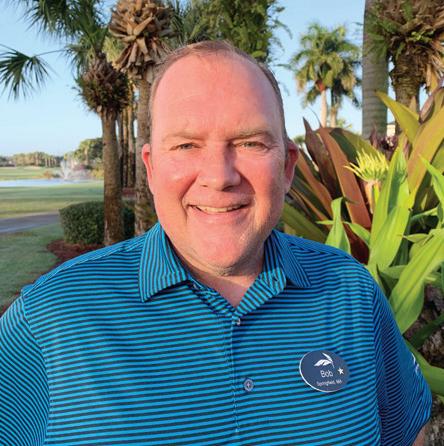
BOB KELLY, DIRECTOR OF GOLF BKELLY@HPGC.COM
Hello from the Golf Shop. Fall is here and another great season of golf at Heritage Palms is in full swing. The Men’s & Ladies’ golf leagues all kick off this month, and feature a great schedule of fun and diverse events. If you’re new to the Club, please stop by the Golf Shop and we can get you registered in our GHIN Handicap system and signed up for a league. Also, we strongly encourage all new members to check out our Golf Tutorials on our HP website under the Golf Tab. Go to: https://hpgcc.com/Golf/Golf_Tutorials . These presentations cover the Chelsea Tee System, GHIN Handicap System, Golf
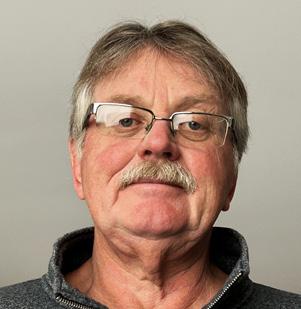
Course Etiquette & Pace of Play, and the Golf Genius Tournament System. As always, we’d still love to see you in the Golf Shop and help with any golf-related matters. We are here for you!
On Thanksgiving Day, we’ll once again be having an open play 7:45 shotgun on both courses, with the Pro Shop and courses closing afterwards. You can just put in a regular Chelsea request to play that morning. Sign-ups for the Christmas Scramble taking place on Sunday, December 7, will be coming out shortly. Look for a registration email from Golf Genius.
ANDY WHITE, MGA SECRETARY AGTCAWHITE@ROGERS.COM
Welcome to the 25th MGA season! It begins with a Wednesday social event, and three Thursday golf events.
• November 5: Happy Hour from 5:30 to 7:30 p.m. in the Palms dining room.
• November 6: 2 Best Balls of 4
• November 13: first of 2 rounds of Eclectic scoring. Eclectic scoring is when you play two rounds and take the best of the two scores on each hole.
Alternate game: 1 odd, 2 even scores for those not playing in the 2-week Aggregate.
• November 20: second round of Eclectic Scoring.
Alternate game: 3-2-1 for those not playing in the 2-week Aggregate.
The full league and special event schedules are posted under the MGA tag in the Golf section of the Heritage Palms website. Should you have any questions about our program, the contact information for all MGA Board Members is also posted there.
The Chelsea Tee Time system is still in off-peak season mode. This means that points are assigned on the day of play, no points are assigned at placement, and members do not receive points for bringing guests. The system will operate this way until January 1, 2026 when inseason mode begins.
Both courses are in great shape, and it’s our responsibility to keep them that way. If we all do our part daily to take care of the courses, we’ll continue to enjoy the great playing conditions we now have. Look forward to seeing you around the Club!
JOE ALT
September 17, 2025
#3 Royal 119 yards
7 iron
This is Joe’s 1st holein-one!

HOLLY OSLER
September 27, 2025
#12 Royal 92 yards
7 iron

This is Holly’s 4th hole-in-one, and her 2nd at HP! Her other HIOs were at River Hall, Babcock Ranch, and on Royal 5.
MARY MALMQUIST
October 1, 2025
#14 Royal 86 yards
9 hybrid
This season the MGA will again be raising money for the Harry Chapin Food Bank of SWFL. This invaluable organization provides hunger relief to the less fortunate by helping more than 250,000 SWFL residents.
This promises to be another outstanding season of fun and competition, and we invite you to join us by calling the Pro Shop to register for this season.
This is Mary’s 2nd hole-in-one. Her other one was also at HP… on the same hole!



DAVE KRAFT DKRAFT_SR@YAHOO.COM
You are playing hole number seven on the Sabal Golf Course. You hit your second shot toward the penalty area on the right side of the fairway. You find your ball a few inches into the penalty area. Like several holes at Heritage Palms, the penalty area red line is marked on the cart path. For your next stroke you would have to stand on the cart path, plus you may damage your club on your follow through. Are you allowed free relief from the cart path in this situation?
NO.
Rule 16.1 Abnormal Course Conditions (Including Immovable Obstructions)
Rule 16.1a (2) Relief Allowed Anywhere on Course Except When Ball Is in Penalty Area . Relief from interference by an abnormal
course condition is allowed under Rule 16.1 only when both:
• The abnormal course condition is on the course (not out of bounds), and
• The ball is anywhere on the course, except in a penalty area (where the player’s only relief is under Rule 17 Penalty Relief)
If you look at the back of a score card there is a Local Rule that states.
• Painted Lines on Cart Path – If your ball is on the red line on cart path you receive free relief. Any balls crossing painted line are in the penalty area.
Here is this month’s golf etiquette tip : Players should always show consideration for other players on the course and should not disturb their play by moving, talking, or making unnecessary noise.

